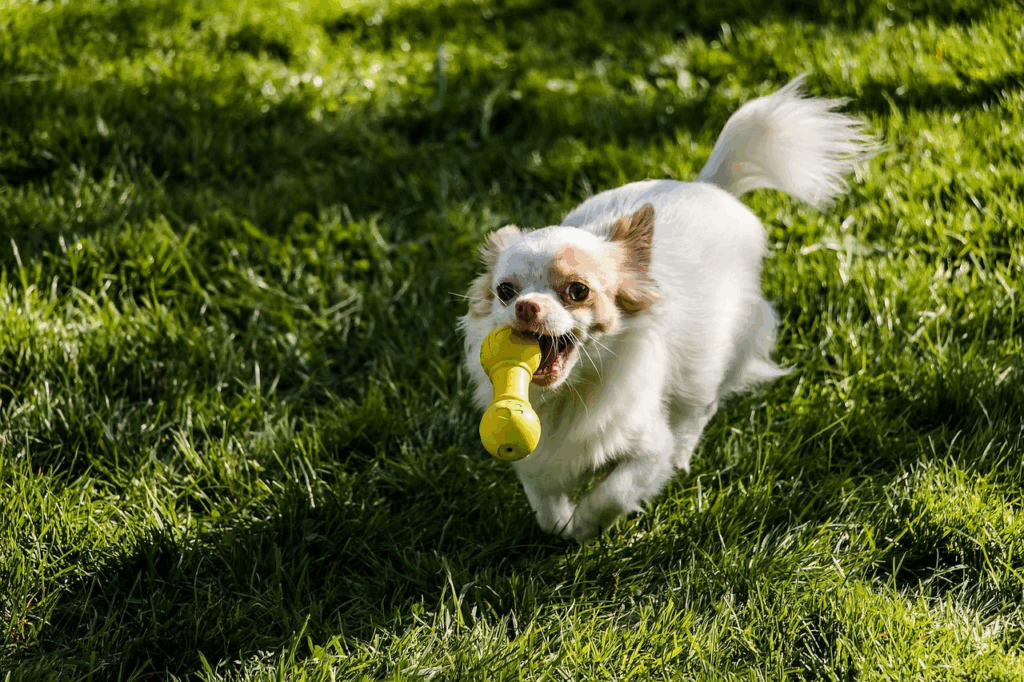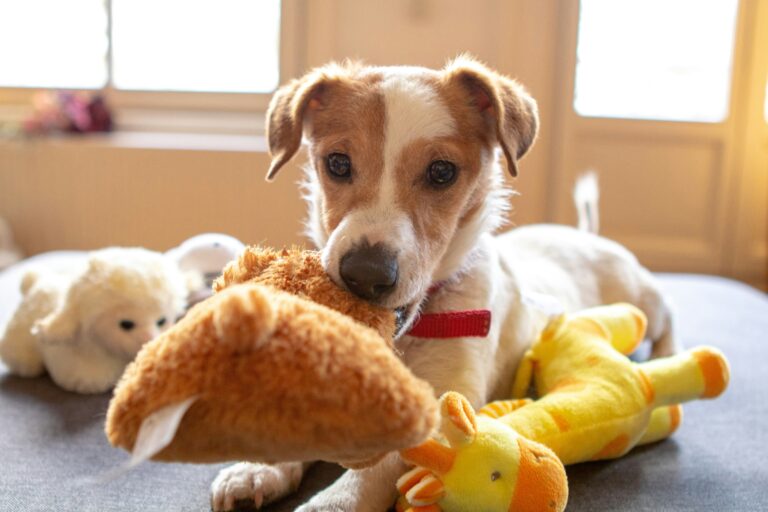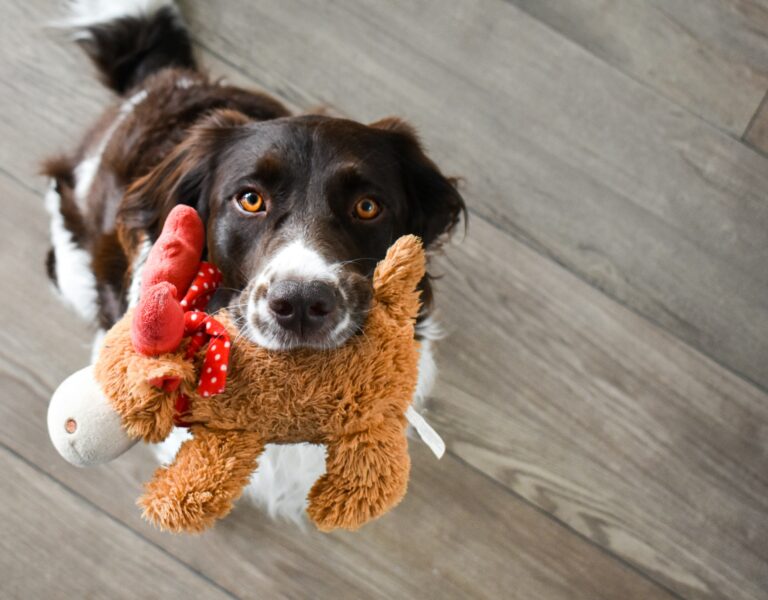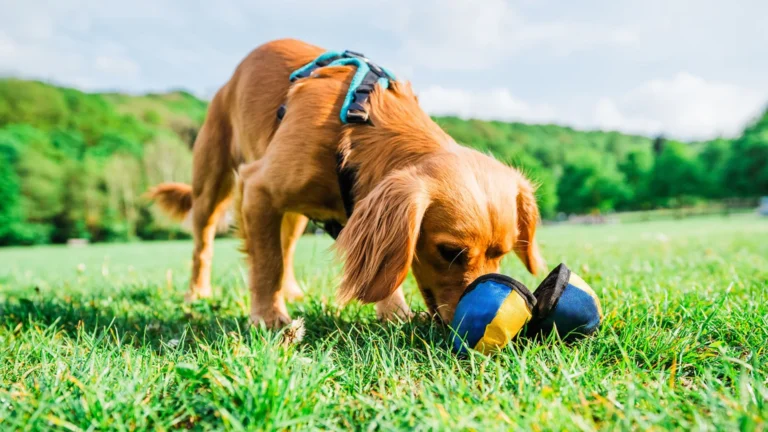Unleashing the secrets to maintaining your petite canine’s joy while ensuring their safety, this in-depth analysis aims to guide you through the intriguing world of squeaky toys for small dogs. No stranger to the bright eyes and wagging tails at the sound of a squeaky toy, we understand your desire to provide your furry friend with the best. The importance of selecting the right plaything is undeniable, considering your little pup’s physical and mental health.
Delving into the realm of squeaky toys, we will dissect the numerous benefits these seemingly simple objects bring to your pup’s life. From enhancing their cognitive skills to offering hours of entertainment and reducing separation anxiety, the perks are plentiful. However, it’s not all fun and games, as we also shed light on the potential risks and how to avoid them, guaranteeing a safe and enjoyable playtime for your small dog.
Striking a balance between fun and safety, this comprehensive guide will equip you with the necessary knowledge to make an informed choice. By the end, you will have a clearer understanding of the types of squeaky toys best suited for small dogs, and the ones to steer clear of. So, gear up for a journey of exploration into the world of squeaky toys, all for the love and safety of your small, adorable canine companion. 🐾🐕
The Science Behind the Squeak: Understanding the Attraction
When it comes to squeaky toys, there is a certain psychology at play that explains why small dogs are often attracted to them. The primary theory is that the high-pitched noise produced by the squeaky toy triggers an instinctive response in the dog, simulating the sound of prey in distress. As small dogs were bred to be hunters in their ancestral lineage, this sound can stimulate their natural chase and catch instincts.

Additionally, the interaction between a dog and its squeaky toy provides a source of mental stimulation. The unpredictable nature of the squeak can help keep a dog engaged and alert, contributing to their overall cognitive health. It’s akin to us humans solving puzzles or crosswords, keeping our minds active and sharp.
Interactive Vs Solo Play
When considering the use of squeaky toys, it’s important to distinguish between interactive and solo play. Interactive play involves the owner’s participation, which can help form a stronger bond between the pet and the owner. On the other hand, solo play allows the dog to entertain itself, which is beneficial when the owner is busy or away.
The Benefits of Squeaky Toys for Small Dogs
Squeaky toys offer numerous advantages that go beyond simple entertainment. For small dogs, these toys can become a fundamental part of their physical, emotional, and mental development. Properly chosen and used, squeaky toys can significantly contribute to a happy, healthy lifestyle for your small companion.

Physical Exercise and Health
Small dogs often have a lot of pent-up energy despite their size. Engaging them in play with squeaky toys is a perfect outlet for that energy. Running, chasing, pouncing, and chewing help promote cardiovascular health, maintain joint flexibility, and contribute to weight management. Regular exercise through play helps prevent obesity-related issues, such as diabetes or joint problems, which are common among small breeds. Moreover, engaging in active play sessions can strengthen muscles, improve agility, and boost overall stamina.
Mental Stimulation and Cognitive Benefits
Squeaky toys offer more than physical exertion; they also challenge the mind. The unexpected and sometimes unpredictable sound of a squeaky toy keeps small dogs mentally alert and engaged. This mental exercise is crucial, particularly for intelligent breeds like Terriers, Pomeranians, and Dachshunds, which thrive on problem-solving activities. Engaging your dog’s brain with different squeaky toys can prevent boredom, reduce destructive behaviors, and enhance their capacity for learning new commands and tricks.
Promoting Healthy Chewing Habits and Dental Health
Chewing is a natural behavior for dogs, and when directed towards appropriate toys, it can promote excellent dental health. Gnawing on squeaky toys helps scrape away plaque and tartar buildup, reducing the risk of periodontal diseases. Strong jaws are vital for overall oral health, and regular chewing can keep those muscles well-conditioned. Additionally, having an appropriate outlet for chewing instincts protects furniture and personal belongings from being damaged.
Addressing Separation Anxiety with Squeaky Toys
Small dogs often form strong attachments to their owners, making them more prone to separation anxiety. Symptoms may include excessive barking, chewing, pacing, or even house soiling. Providing your dog with a favorite squeaky toy can help ease this anxiety. The familiar scent combined with the rewarding squeak offers comfort during periods of solitude. Some toys are designed with hidden compartments for treats, giving your dog a task to focus on and extending the entertainment value.
Rotating different squeaky toys can prevent boredom and maintain your dog’s interest when alone. This strategy can significantly ease the transition when you leave the house, making separations less stressful for your little companion.
Potential Risks of Squeaky Toys for Small Dogs
Despite the myriad benefits, it is crucial to acknowledge that squeaky toys are not without risks. Awareness and proactive management can make all the difference.
Choking Hazards and Ingestion Risks
One of the most significant concerns with squeaky toys is the risk of choking, particularly if the toy is too small or poorly made. Small dogs with strong jaws may eventually tear the toy, exposing or releasing the squeaker inside. If swallowed, squeakers can cause blockages that require emergency surgery. Always select toys appropriately sized for your dog’s mouth, and immediately remove any toy that shows signs of damage.
Dental Injury and Overuse
While chewing is generally beneficial, excessive or aggressive chewing can result in dental fractures or worn-down teeth. Some squeaky toys may be made from materials too hard for a small dog’s delicate teeth. Carefully inspect toys for hardness, and observe your dog’s chewing style to ensure they are not exerting excessive force that could result in injury.
Obsession and Behavioral Issues
Some small dogs may develop obsessive behaviors around squeaky toys. Constant, frantic chewing or guarding the toy aggressively against other pets or family members can signal unhealthy attachment. If you notice your dog exhibiting obsessive behavior, it is important to moderate their access to the toy and redirect their attention with alternative activities or toys.
Choosing the Right Squeaky Toy for Small Dogs
The toy market is full of options, but not every squeaky toy is suitable for small dogs. Choosing the right toy can prevent accidents and maximize benefits.
Size Matters
Always choose a squeaky toy that is proportionate to your dog’s size. It should be large enough that your dog cannot easily fit the entire toy in their mouth but small enough for them to carry and chew comfortably.
Material and Durability
Durable, non-toxic materials are essential. Look for toys made from tough rubber, reinforced fabric, or strong plush materials with double stitching. Avoid cheap plastic toys that can break apart easily. Many reputable brands will indicate if their toys are BPA-free and safe for chewing.
Squeaker Safety
Some squeaky toys are designed with encased squeakers or double layers that make it more difficult for dogs to access the inner components. Consider investing in toys with reinforced squeaker pockets to minimize the risk of ingestion.
Best Practices for Safe Use of Squeaky Toys
Keeping your dog safe while enjoying their favorite toys requires attentiveness and a few practical habits.
Supervise Playtime
Especially with new toys, supervision is critical. Observe how your dog interacts with the toy and be ready to intervene if they attempt to tear it apart or remove the squeaker.
Regular Inspection and Maintenance
Examine squeaky toys frequently for tears, cracks, or loose parts. Any sign of deterioration means the toy should be discarded or replaced immediately. Keeping a small stock of backup toys can help you quickly swap out damaged ones.
Cleanliness and Hygiene
Toys collect dirt, saliva, and bacteria over time. Regularly wash squeaky toys according to the manufacturer’s instructions. For fabric toys, a gentle machine wash can suffice, while rubber or plastic toys may require hand-washing with pet-safe soap.
Creating a Safe and Stimulating Play Environment
Squeaky toys should not be the sole form of entertainment for your small dog. A well-rounded play environment enhances both mental and physical health.
Incorporating Different Types of Toys
In addition to squeaky toys, introduce puzzle toys, tug ropes, treat-dispensing toys, and balls. Different types of toys challenge different skills, keeping your dog mentally agile and physically fit.
Outdoor Activities
Daily outdoor walks, supervised off-leash play, and agility exercises provide excellent complementary activities. Fresh air, exploration, and social interaction with other dogs contribute to a balanced lifestyle and reduce the likelihood of destructive behavior at home.
Training Sessions and Games
Incorporating short training sessions into your daily routine can also help stimulate your dog’s mind. Use squeaky toys as rewards during training to make the process even more exciting and motivating.
Rotating Toys for Ongoing Interest
Dogs can become bored with toys if they have constant access to the same ones. Rotating squeaky toys every few days can rekindle their interest and excitement. Store some toys away and bring them out later as “new” surprises. This tactic keeps the playtime experience fresh and stimulating.
Understanding Your Dog’s Play Style
Every dog has a unique play style. Some prefer gentle mouthing, others like aggressive tugging, and some enjoy tossing their toys into the air. Selecting squeaky toys that match your dog’s preferred method of play enhances their enjoyment and minimizes frustration.
If your small dog tends to be a heavy chewer, opt for toys designed for tougher play. For more delicate players, soft plush squeaky toys may be ideal. Tailoring your selection ensures both safety and maximum satisfaction during play. the toys are appropriate for your dog’s size and behavior.
Conclusion
Squeaky toys for small dogs are both beneficial and risky. The enjoyment they provide to your pet is undeniable. The mental stimulation, physical exercise, and reinforcement of natural instincts they offer are critical aspects of a healthy, happy pup’s life. These toys are not merely distractions; they serve as essential tools for developing cognitive skills, maintaining dental health, and fostering positive emotional states.
However, it is crucial to balance these benefits with the potential risks they pose. Owners must always be diligent in ensuring that the toys provided are size-appropriate, durable, and made from non-toxic materials. Choosing the correct toy is not just about entertainment but about safeguarding the wellbeing of a beloved family member. Choking hazards and ingestion of harmful components can be fatal if not proactively prevented.
Regular monitoring and replacement of worn-out toys is key to maintaining safety. Toys should be inspected frequently for any signs of wear and tear, especially those that have hidden squeakers inside. The integrity of the toy must be preserved to prevent accidental ingestion. Investing in slightly more expensive, high-quality toys can often pay off in the long run by providing greater durability and peace of mind.
Dog owners should also make an effort to interact with their dogs during playtime. Shared play sessions not only enhance the fun but also offer valuable opportunities to monitor toy usage in real-time. Additionally, engaging in play strengthens the emotional bond between pet and owner. Dogs thrive on social interaction, and time spent playing together can deepen trust, foster companionship, and provide both physical and emotional enrichment.
At the end of the day, the wellbeing of your furry friend is paramount. Dogs rely entirely on their humans to create safe, nurturing environments where they can explore, play, and develop. Thoughtful choices regarding toys, combined with active supervision and involvement, are fundamental responsibilities that come with being a pet owner.
Squeaky toys can be a wonderful addition to your small dog’s playtime routine when used responsibly. Not only do they provide countless moments of joy, but they also fulfill many important physical and psychological needs. Whether it is a brief game of fetch in the backyard or hours of solo play while you are away, these toys can become a cherished part of your dog’s daily life.
Pet owners should always remember that variety is key. Combining squeaky toys with other types of stimulation — such as puzzle feeders, training sessions, and outdoor activities — ensures a well-rounded, enriched experience for their pets. Just like humans, dogs appreciate new experiences and challenges, and keeping playtime dynamic helps prevent boredom and behavioral problems.
Ultimately, your small dog deserves the best opportunities for a vibrant, happy life filled with play, affection, and adventure. By choosing safe, appropriate toys and engaging actively with your pet, you are not just giving them a squeaky toy — you are offering them love, care, and a stronger, healthier bond that will last a lifetime. So go ahead, explore the colorful and exciting world of squeaky toys with your little companion. Embrace the squeaks, celebrate the wagging tails, and always remember to “squeak” responsibly! 🐾🐶



